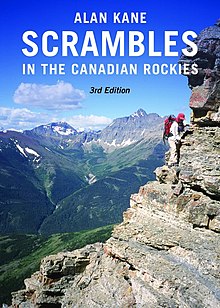
Climbing guidebooks are used by mountaineers, alpinists, ice climbers, and rock climbers to locate, grade, and navigate climbing routes on mountains, climbing crags, or bouldering areas. Modern route guidebooks include detailed information on each climbing route, including topo diagrams, route beta, protection requirements, and the ethics and style that are in place for a given climbing area (i.e can sport climbing bolts be used).
Modern climbing guidebooks are increasingly available in digital format, and even as searchable smartphone apps with extensive beta and three-dimensional diagrams of routes. Extensive online 'opensource' climbing databases of routes now exist, however, the publication of 'physical guidebooks' for technical climbing routes is still ongoing given the unique demands of climbing (with many having both a physical and online edition).
Climbing route guidebooks began to proliferate at the turn of the 20th century in Europe and became an important chronicle of the history and stories of climbing areas and routes (e.g. who made the first free ascent) and played an important part in promoting the sport of climbing and the attractiveness of particular areas. Certain notable guidebooks played an important role in standardizing the grading systems that are in use today.